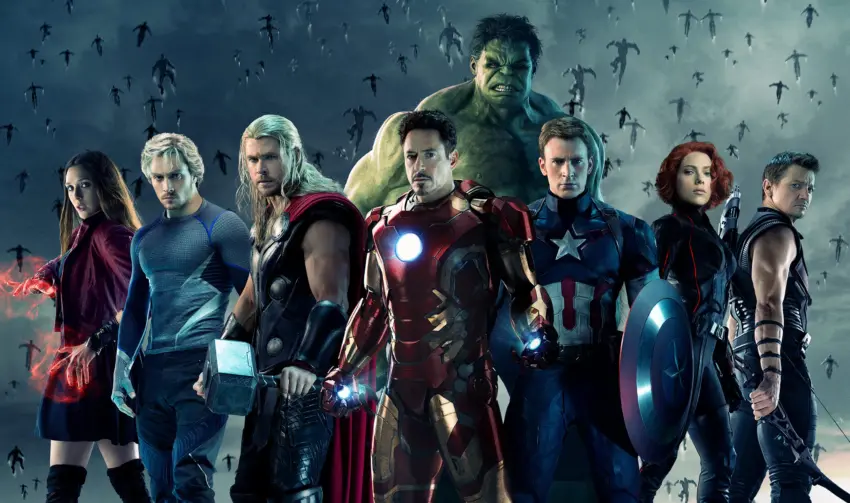Throughout this series, we’ve taken a deep-dive into the Marvel Cinematic Universe (MCU) and what they did to make sure their emotional moments left an impact on the audience. We’ve looked at everything from the Avenger’s very first team up to their final stand in Infinity War, examining exactly what made those moments powerful.
But we’ve finally reached the end of the series and the very last principle we have for making sure your emotional scenes land.
And this principle trumps every other. Once you’ve mastered it, you can strategically break or bend nearly every one of the other rules we’ve laid out if it serves your story. This principle adds a layer of depth not only to the emotional moment itself, but also to your entire book.
So without further ado, we’re diving into exactly what this principle is and how to execute it. And we’ll do it by looking at one of my all-time favorite Marvel movies, Avengers: Age of Ultron.
Avengers: Age of Ultron
Age of Ultron features the classic team of Avengers, including Steve Rogers, Clint Barton, and Natasha Romanoff. But it also introduces two new characters, the Maximoff twins Wanda and Pietro — two children whose family was killed because of Tony Stark’s weapons. When they were recruited by HYDRA and offered the chance to get revenge, they took it without question.
They are the only two out of dozens of children who survived HYDRA’s experimentation. Armed now with supernatural abilities as adults, they form formidable enemies for the Avengers. Pietro has incredible speed and reaction times, while Wanda is able to move objects at will and toy with the minds of her enemies. They catch the Avengers off guard and nearly turn them against each other. After just one encounter, they are forced to regroup at Clint’s safehouse in Iowa.
It’s there that they discover Clint’s secret — the family he’s not supposed to have as a SHIELD agent, who he’s kept hidden for years. The Avengers meet his wife and children, but the unexpected shock coupled with their unstable mentalities following their encounter with Wanda causes many of them to question the choices they’ve made to get where they are — and regret that many of them have missed out on the opportunity to have a family.
Natasha can never have kids because of the intense training program she was enrolled in as a child. At the time it didn’t seem all that important, but now she’s interested in starting a real family, and meting Clint’s is just another painful reminder that that can never happen now.
Steve sacrificed himself seventy years ago to protect his country, but spending decades on ice while the people he cared about grew older and lived their lives without him hit him with full force for the first time. He knew he’d never have a future with his sweetheart Peggy Carter, but that’s been magnified and made nearly unbearable. Steve begins to wonder if all the sacrifices he’s made to “do the right thing” have really been worth the cost of the fulfillment a family could bring him.
Thor is haunted by memories of his home on Asgard, where he’s left a complicated family situation to avoid facing the personal conflict he knows is inevitable. Now more than ever he longs to rediscover the sort of family he grew up with, and Clint’s home reminds him that it’s still possible. With little explanation and no hesitation, Thor leaves for Asgard to face what he’s been avoiding and resolve the issues that have held him back.
Each of these moments are highly emotional, diving into the internal dialogue and inner motivations of each of the characters. They bring their pasts, their hurts, and their insecurities to light in a special way. These moments are indispensable supports to the cohesion of the story as a whole. And the reason for this is due to our final principle for writing emotional moments:
Proximity to theme makes relevance.
Proximity to Theme Makes Relevance.
Readers subconsciously measure the relevance of any moment, character, or plotline based on its proximity to the theme. This is true for any aspect of your work, but especially so for the emotional scenes. The closer a scene gets to facing your theme head-on, the more relevant it will seem to the audience. In this case, these scenes are the closest the movie ever gets to saying the theme out loud: What is a family worth?
Steve’s reflection on the life he lost with Peggy allowed him to question whether or not the value of having a real family is so great that it outweighs the good he’s been able to do as a superhero. This scene had such a powerful impact because the very heart of Age of Ultron was emphasized and allowed to shine in that one moment. It became not only emotional in its own right, but also highly important to the rest of the movie.
And the same goes for the other characters, like Black Widow and Thor. Their struggles were highlighted in a special way because of their proximity to the theme. The writers set up the whole movie in a way that served the individual struggles and questions of their main cast.
In fact, the entire plot of the movie forces the characters and the audience to wrestle with this question about family and sacrifice. We understand why the Maximoff twins lost sight of their moral compass in the wake of losing their entire family — because they know how much family is worth. We see why humanity is worth fighting and dying for in the face of a far more efficient, painless existence — because erasing that humanity would erase the possibility of happy, healthy families. We understand why the Avengers are eventually able to forgive the Maximoffs and join forces with them as allies — because the Avengers recognize the Maximoff’s need for a family.
These different elements and ideas only make sense because we got a crystal-clear picture of the theme through the scenes we listed above. These scenes truly were a fundamental part of the rest of the film, and the audience could sense that instantly because of the way they interact with the theme.
As a writer, you can use this concept to your advantage, making even scenes that break the other rules we’ve discussed seem like a fundamental part of your story simply by making sure they interact with your theme in a meaningful way. Without knowing why, the audience will know it’s an important, deeply relevant point in your story, even if other elements of it could have been done better. This moment in Age of Ultron is a great example of that.
For one thing, its buildup has been criticized. Having Clint pull a family out of nowhere seems disjointed, breaking the principle “Buildup makes it matter” right out of the gate. Another fair criticism is the fact that it also breaks the “Rarity makes value” principle. It seems repetitive, maybe even redundant at first, to have each character in the cast take a moment to wrestle with the same thing. We could have just focused on Natasha’s regret at not having children, or Thor’s feelings toward his family at Asgard. It wasn’t necessary to have each of the characters go over the idea of family separately. To a certain extent, it cheapens each of the individual scenes by making them less special, instead just one in a sequence of emotional moments. But although certain aspects of this scene could have been executed better, the purpose of these scenes in themselves is rarely called into question because of their close connection with the theme.
And this isn’t the only reason this principle is so powerful. On top of what we’ve already discussed, tying an emotional moment to your theme is an almost-guaranteed method to achieve the other five principles we’ve mentioned in this series. It immediately eliminates emotional moments that don’t impact the theme, for example, making the ones that are left more rare and thus more valuable. It ensures each of them are built up towards and have serious consequences afterward because a story’s theme impacts the entire work, both before and after the emotional moment that makes it the most clear.
Without this principle, even if you do everything else right, your emotional moments will feel disjointed and random because they’re disconnected from the rest of the story. They don’t fit into the purpose of the rest of the book, and so they seem tacked on and cheap. Rather than letting this happen, show your audience just how valuable your emotional moments are by tying them to the theme of your story. Give these moments a deep, lasting significance by allowing them to interact with and challenge the ideas that form the heart of your book, creating moments that form not only a crucial support to the rest of your story, but also leave an impression that your readers will remember long after they close your book.



Let us know:
Which of your emotional moments connect to your theme? Where have you seen this principle done in other works?


Hi! My name is Mara, and I’m a Christian artist, violinist, and blogger. I remember the day that I decided that I would learn something new about what makes a good story from every book I picked up — whether it was good, bad, or a mixture of both. I use this blog as a way of sharing some of the tips and tricks I’ve learned, and highlight which books, cartoons, and movies have taught me the most about writing an awesome story.

